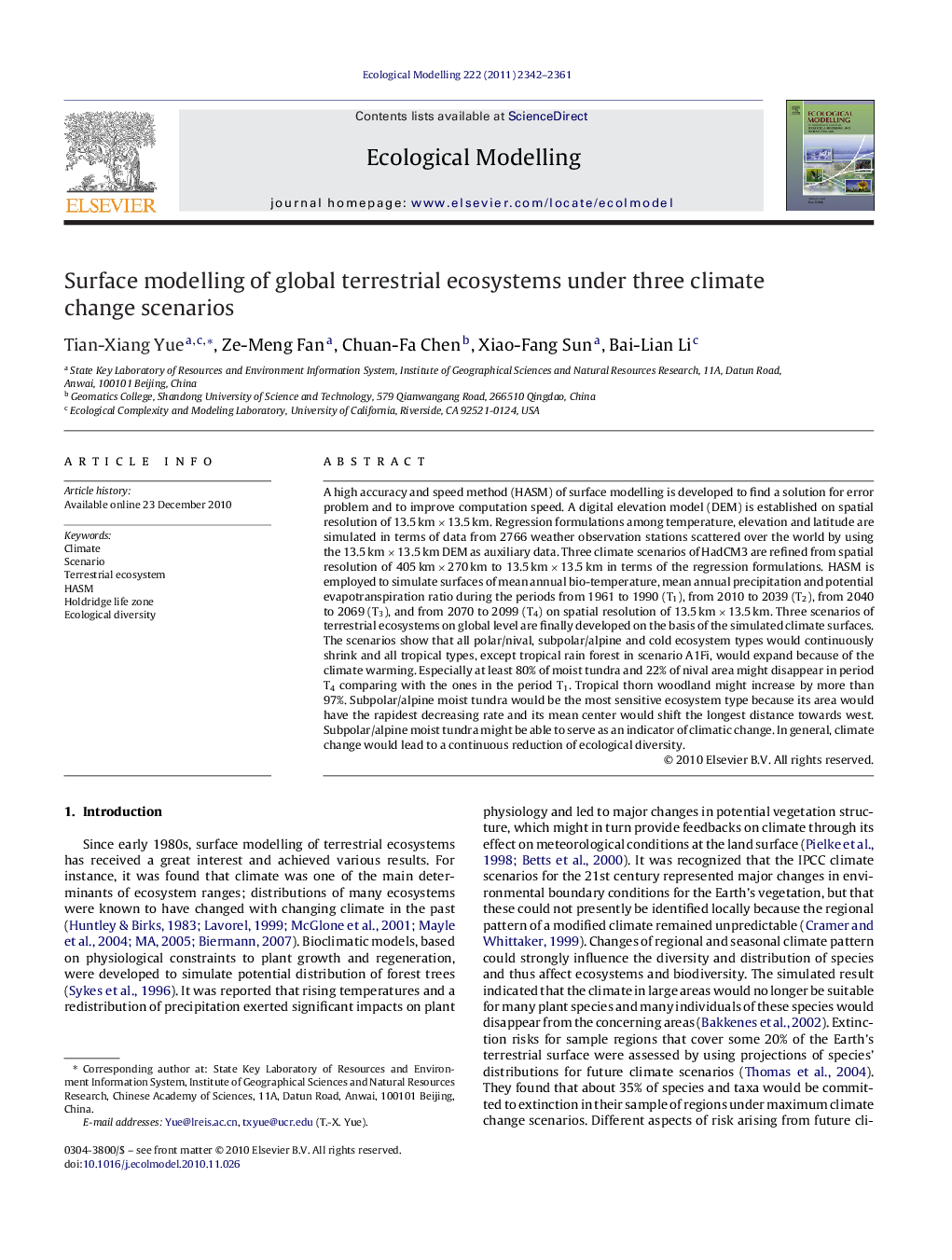| کد مقاله | کد نشریه | سال انتشار | مقاله انگلیسی | نسخه تمام متن |
|---|---|---|---|---|
| 4376876 | 1303398 | 2011 | 20 صفحه PDF | دانلود رایگان |

A high accuracy and speed method (HASM) of surface modelling is developed to find a solution for error problem and to improve computation speed. A digital elevation model (DEM) is established on spatial resolution of 13.5 km × 13.5 km. Regression formulations among temperature, elevation and latitude are simulated in terms of data from 2766 weather observation stations scattered over the world by using the 13.5 km × 13.5 km DEM as auxiliary data. Three climate scenarios of HadCM3 are refined from spatial resolution of 405 km × 270 km to 13.5 km × 13.5 km in terms of the regression formulations. HASM is employed to simulate surfaces of mean annual bio-temperature, mean annual precipitation and potential evapotranspiration ratio during the periods from 1961 to 1990 (T1), from 2010 to 2039 (T2), from 2040 to 2069 (T3), and from 2070 to 2099 (T4) on spatial resolution of 13.5 km × 13.5 km. Three scenarios of terrestrial ecosystems on global level are finally developed on the basis of the simulated climate surfaces. The scenarios show that all polar/nival, subpolar/alpine and cold ecosystem types would continuously shrink and all tropical types, except tropical rain forest in scenario A1Fi, would expand because of the climate warming. Especially at least 80% of moist tundra and 22% of nival area might disappear in period T4 comparing with the ones in the period T1. Tropical thorn woodland might increase by more than 97%. Subpolar/alpine moist tundra would be the most sensitive ecosystem type because its area would have the rapidest decreasing rate and its mean center would shift the longest distance towards west. Subpolar/alpine moist tundra might be able to serve as an indicator of climatic change. In general, climate change would lead to a continuous reduction of ecological diversity.
Journal: Ecological Modelling - Volume 222, Issue 14, 24 July 2011, Pages 2342–2361